PDF chapter test TRY NOW
Millions of years ago (during the stone age), the science of starting a fire was discovered. The early humans used rocks to create a fire. Pieces of certain types of rocks were banged together until sparks erupted.
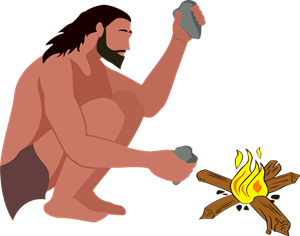
Early man creating fire using flint stones
However, before the humans learned to create and control fire, they might have been scared and disturbed to see one. Volcanoes, forest fires, and lightening and the damage they caused might have caused wonder and anxiety in our ancestors. Check out the following GIF to see how far, wide, and quickly can a forest fire spread.

Forest Fire
Fire is a dangerous element, and it can cause irreplaceable damage if one doesn't know how to control it. It is so powerful that it can spread very fast and can destroy almost everything.
Fire is created as a result of a chemical reaction. When a fuel containing carbon and hydrogen comes into contact with oxygen, it creates heat and light. Fire is nothing but a combination of heat and light. The stronger the fire gets, stronger would be the heat and the light produced.
We have seen it in the previous paragraph that we need two ingredients to make fire. They are oxygen and fuel. But there is also a third element that is required. That is heat.
For example, imagine that you are trying to set fire onto a wet paper. Will it catch fire? No. Why is that? It is so because the paper lacks heat. Therefore, heat is essential while creating fire. That is also a reason why it may take more time to start a fire in colder places.
Hence, the three components needed to create fire are fuel, oxygen, and heat.
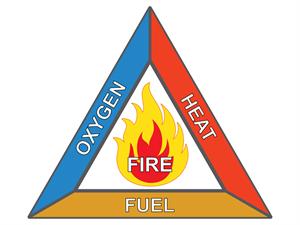
The three things needed while starting a fire
Some of the examples of fuel are wood, coal, cooking gas, petrol, and paper. Fuel is the only visible part of the components. Fuel is also the component on which the fire catches on.
Oxygen is found in the air that we breathe. Oxygen is invisible, but it is present everywhere. Fire will never persist without the oxygen.
Heat is the initial stage of fire. For instance, let us look into the following video. When you light a candle using a matchstick, you will discover that it would take some time to catch a fire. However, if you are going to light a candle whose wick is still hot, then the candle will catch fire quickly.
Oxygen is found in the air that we breathe. Oxygen is invisible, but it is present everywhere. Fire will never persist without the oxygen.
Heat is the initial stage of fire. For instance, let us look into the following video. When you light a candle using a matchstick, you will discover that it would take some time to catch a fire. However, if you are going to light a candle whose wick is still hot, then the candle will catch fire quickly.
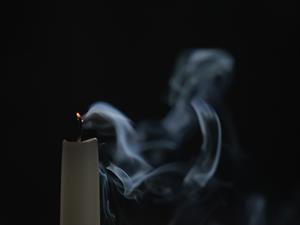
The candle can be lit quickly if the wick is still hot
Hence, heat is needed to start a fire. Heat from the sun is also the reason why the forest fire happens. It is also the reason why the roofs of the houses made of dry coconut leaves and straw catch fire during extreme summer.
Not every fuel catches fire at the same time. For instance, fuel such as paper and petrol catches fire quickly than several other kinds of fuel. Hence, every fuel has a particular temperature at which it begins to burn. This temperature is known as the ‘flashpoint’. It is also known as ‘kindling temperature’ of the fuel.
Three components of fire
S. No | Component | Source/Examples |
1 | Fuel | Wood, coal, cooking gas, and petrol |
2 | Oxygen | Air |
3 | Heat | Fire; sun |
Now that we know that fire can be created using the three elements such as fuel, oxygen, and heat, we should also learn how to stop or control it. Fire is essential in our day to day life. It is used to cook our food, light up our homes during power-cuts, warm homes and buildings in the colder regions, and to produce electricity.

Fire is essential in our day to day life
However, fire is useful only as long as we know how to control it. As the saying goes, fire is a good servant but a bad master. So how can you control a fire? Or rather, what does it mean when one talks about controlling fire?
Okay, let us look into a scenario. Imagine it is nighttime and there is a power cut at your place. You light a candle. And when the power comes back, you blow it off. So, you can light it and switch it off as you wish. This is what controlling means. This is when the fire is your servant.
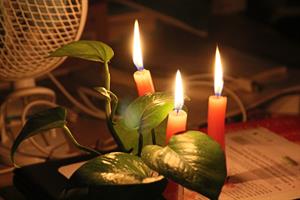
Fire is useful when you know how to control it
However, think of a situation where there is a fire that you cannot put off. What happens when the fire keeps spreading and you cannot stop it? It starts destroying things and lives. This is when the fire turns into a master.
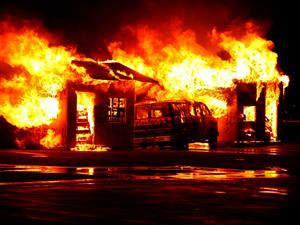
Fire is dangerous when it becomes uncontrollable
Hence, if fire gets out of hand, it can become deadly. Every year, fire goes out of control and destroys thousands of buildings, homes and livelihood, vast areas of forests, and hundreds of human lives.
So, it is crucial that we learn not only how to start a fire, but also how to control it.
Since fire needs three elements to persist, it will perish if you take one of the elements away. Hence, there are three ways through which fire is stopped. Each one is about a procedure which involves in taking one of the components away.

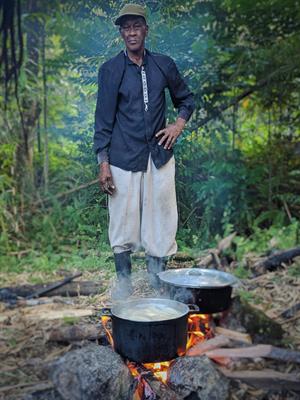
The candlelight experiment demonstrates the role of oxygen in the survival of fire. It is about how you can put out a candlelight flame after covering it with a tumbler. When you cover the candle with a tumbler, you end up depriving the candle the oxygen it needs. When there is no oxygen, there would be no fire.
That is also the reason why carbon dioxide is used as a fire extinguisher. Carbon dioxide will not allow oxygen to reach the burning material, and hence, the fire will stop blazing. 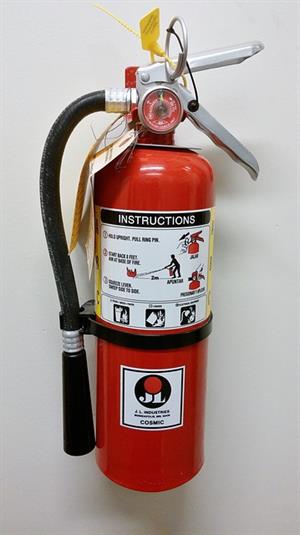
Fire extinguisher
You can also put out a fire by throwing a wet sack or blanket (thick cloth) on the burning material. This will prevent oxygen from entering the material. 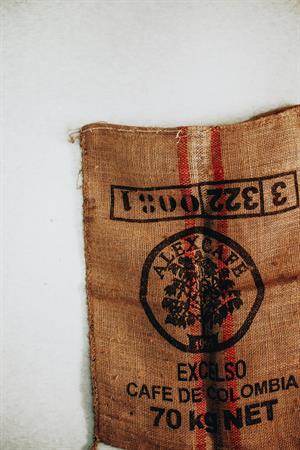
The first method is about fuel. Since fire needs fuel to burn, we can simply stop the fire by not adding more fuel to it. Fire stops blazing when there is no more fuel to burn.
You must have lit sparklers and crackers during Diwali. So, why does the sparklers come to an end after burning for some time?
Yes, you have guessed it right. It stops when there is no fuel to burn. So if you want to keep playing with sparklers, you would have to take a new sparkler.
You must have lit sparklers and crackers during Diwali. So, why does the sparklers come to an end after burning for some time?
Yes, you have guessed it right. It stops when there is no fuel to burn. So if you want to keep playing with sparklers, you would have to take a new sparkler.

Sparklers are lit during festivals
The same principle is followed when you cook in the traditional stove. The stove needs fuel, such as wood, to produce fire. So, if you stop adding wood to the fire, it will stop burning.

A man cooking using the traditional stove
The second method of putting out a fire is by preventing oxygen from reaching it. Oxygen is vital in sustaining a fire. If you take the oxygen away, you end up putting out the fire.
The candlelight experiment demonstrates the role of oxygen in the survival of fire. It is about how you can put out a candlelight flame after covering it with a tumbler. When you cover the candle with a tumbler, you end up depriving the candle the oxygen it needs. When there is no oxygen, there would be no fire.
That is also the reason why carbon dioxide is used as a fire extinguisher. Carbon dioxide will not allow oxygen to reach the burning material, and hence, the fire will stop blazing.

Fire extinguisher
You can also put out a fire by throwing a wet sack or blanket (thick cloth) on the burning material. This will prevent oxygen from entering the material.

Sack
Finally, you can put out a fire by removing heat from the burning material. To stop the fire, you will have to bring the temperature down below the flashpoint.

Bring the temperature down below the flashpoint
How can you do that?
Well, you can pour or spray water on the burning material. This will remove the heat from the material.
By adding water, you are actually taking away two of the components required in creating a fire: heat and oxygen.
Similarly, when you blow out a candle, you are putting the flame off by taking away the above-mentioned components.
Similarly, when you blow out a candle, you are putting the flame off by taking away the above-mentioned components.
When you blow into a lit candle, you are producing carbon dioxide (and taking away the oxygen that is needed for fire). On the other hand, blowing on to the candle removes the hot air around the flame. As a result, the temperature is brought down.

The air that we exhale removes oxygen and heat from the fire
Speaking of water, you should remember that water may not act as an extinguisher in all cases. Instead, it may turn the situation more dangerous.
For instance, water should never come in contact with electrical fire. When water comes into contact with the electrical fire, it will cause electric shock and may even lead to death.
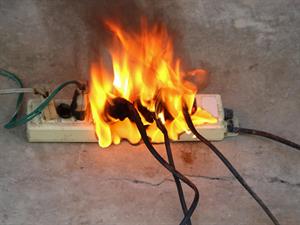
Water shouldn't be sprayed on an electrical fire
Water should never be poured or sprayed onto oil fire either.
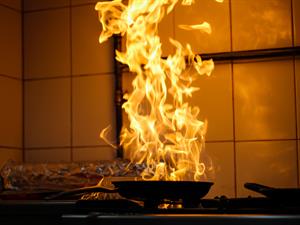
Oil fire and oil do not go well with each
Why is that so?
It is so because water and oil will never blend. When you pour water into a bowl of oil, the oil will keep floating above the water.
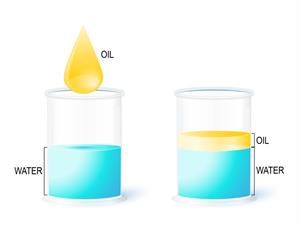
Oil never blends but would remain on the surface of the water
Hence, if the fuel causing the fire is oil, and if you spray water into it, the oil carrying the fire will keep floating instead of getting extinguished.
Therefore, it is highly imperative that you use a carbon dioxide extinguisher while putting out such fires.
Therefore, it is highly imperative that you use a carbon dioxide extinguisher while putting out such fires.
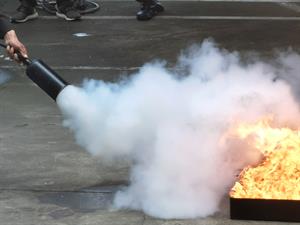
Carbon dioxide extinguisher
When people evolved, and our society became more advanced, the art of fire fighting had also developed.
A long time ago, when science and technology were still infants, people fought fires differently. There were no firefighters or fire service back then. Instead, people acted together. When there was a fire, the entire village gathered and fought it together.
A long time ago, when science and technology were still infants, people fought fires differently. There were no firefighters or fire service back then. Instead, people acted together. When there was a fire, the entire village gathered and fought it together.
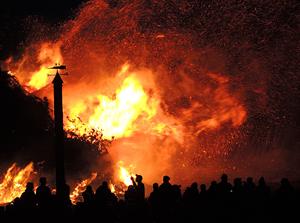
People gathered and fought fire
The people used to form a human chain; there would be people standing in a line from the place of fire to the nearest well or pond. The person closer to the water source would keep passing buckets of water, and the person at the fire would spray or pour it on the fire. People did this until they stopped the fire.
However, things have changed now. Today, when we think about fire accidents, we always think about the fire service, firefighter, or the red cylinder known as the fire extinguisher.
Every year, we spend a lot of time, effort, and money in fighting fires. But more importantly, we have been trying to find new methods to prevent fire hazards.
For instance, we have laws and regulations while constructing new buildings. To control fire and reduce the fire risk, you must ensure that space is left between buildings. Every new construction, especially a public place, must ensure observance of fire prevention norms.
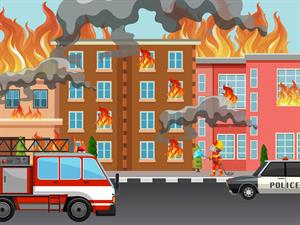
Fire spreads easily and causes more damage when there is no proper space between buildings
Every country and state has a well-functioning fire department or fire brigades. Each department will have several teams consisting of highly trained people who possess many skills. They also have several advanced equipment to fight fire. They also have emergency contact numbers through which we could reach them. For instance, in India, you can reach the fire service through the national (Indian) emergency fire service number- \(101\), or by dialling \(112\)- the national emergency number.
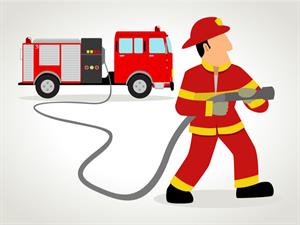
A firefighter (fireman) with his fire engine (firetruck)
The firefighters put out fires. They control it by cutting off the electricity supply, breaking down (usually using physical strength) dangerous walls, spraying water and other materials to bring the fire under control. They are also trained in first aid so that they can help people suffering from injuries or the effects of smoke.
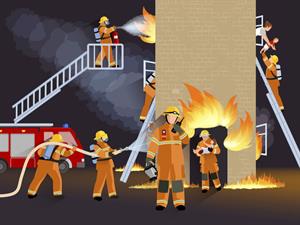
A team of firefighters in action
Although fire hazards are still a concern, it could be said that we have learnt rather well to control fire and put it to good use in our everyday life.
When the early humans discovered fire, it helped them lead a more comfortable life. It helped them cope with nature. For instance, fire helped them get through harsh winters and had also helped them protect themselves against the wild animals.
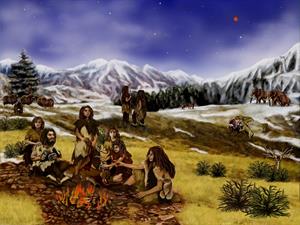
Early humans using fire
Fire also helped them adopt a settled mode of life. Earlier, people lead the lives of nomads. They never settled down in a single place because they had to meet their basic needs, such as food and shelter. However, fire sheltered them, and as time went by, people learned to cook food before consuming.
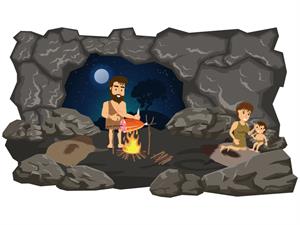
Gradually, the early humans adopted a settled mode of life
Though fire is pure science, people from many parts of the world still worship fire. The reason being that fire is both the source of life as well the source of destruction. If not treated with caution, fire will turn deadly.
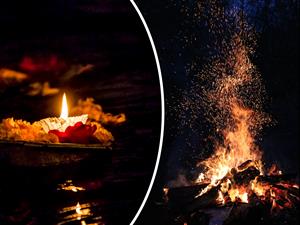
Fire is so powerful that it is worshipped in many parts of the world
Fire can be a great friend, but, when taken lightly, it can be a dangerous enemy.
Fire can be a great friend, but, when taken lightly, it can be a dangerous enemy.
